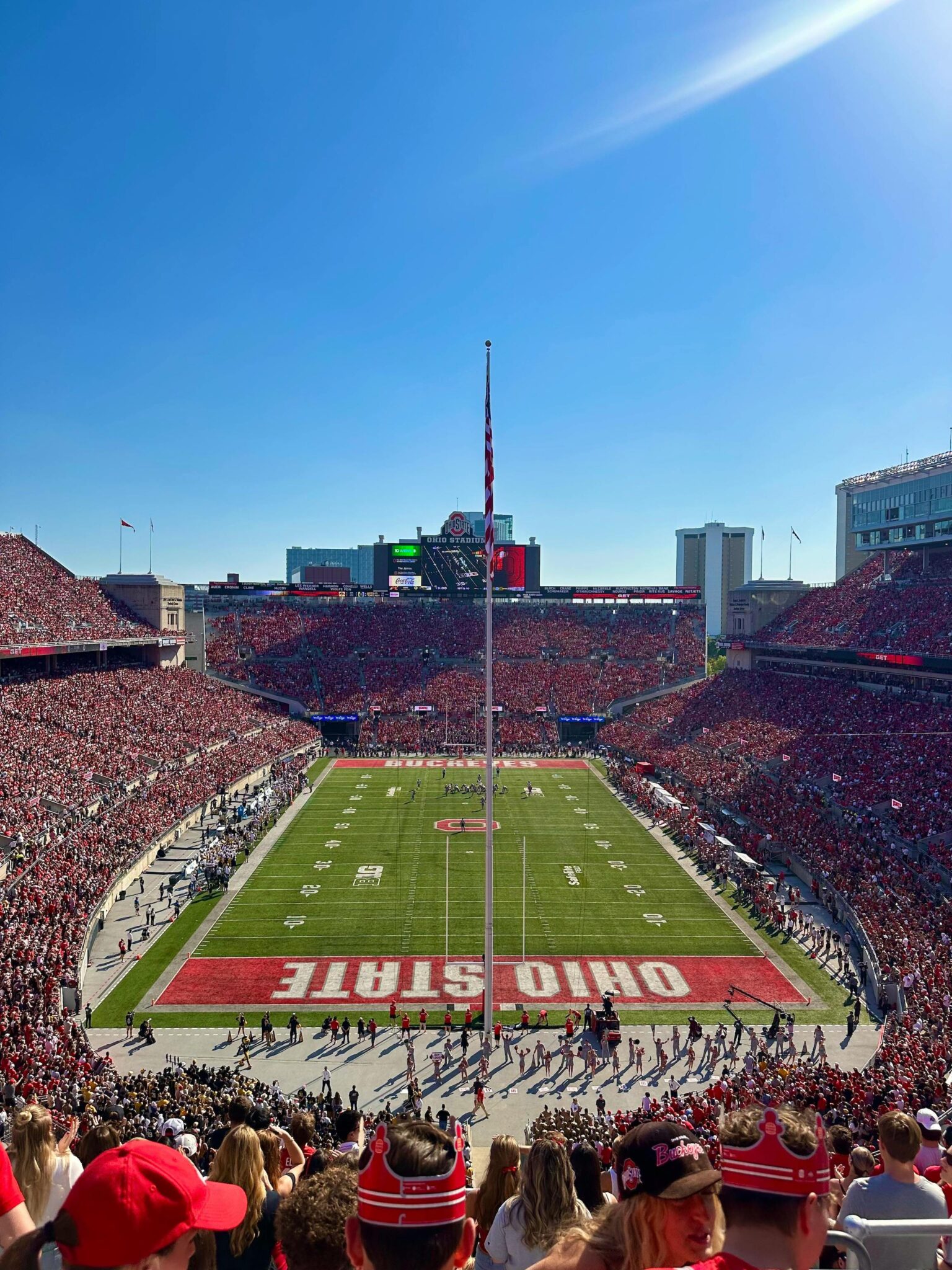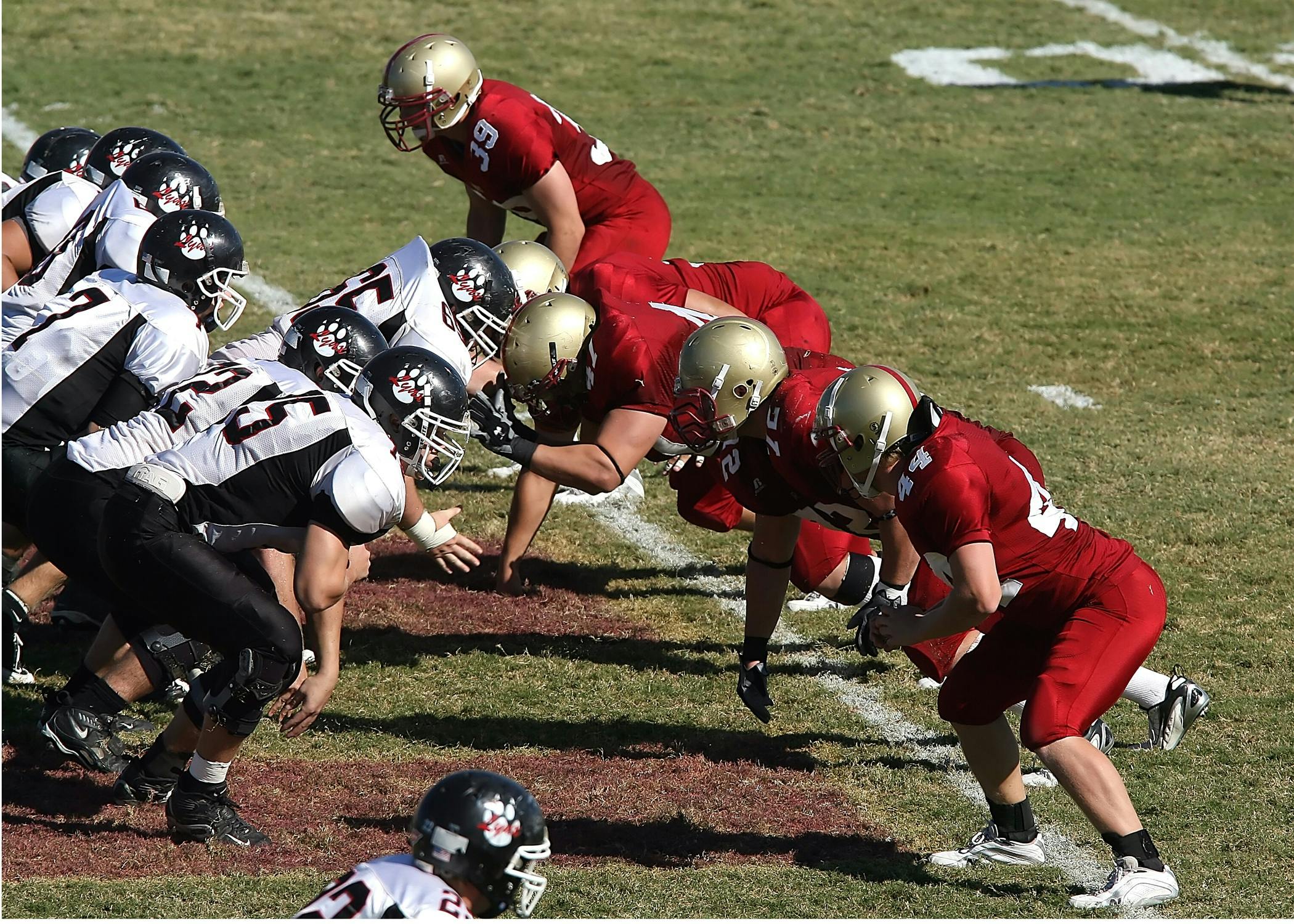
Okay, so you’ve heard the roar of the crowd, seen the mascots prancing, and maybe even glimpsed a game on TV and wondered, “What in the world is all this college football hoopla about? Fear not, curious soul! College football is essentially a hyper-competitive version of pro football but with much more soul. Think of it as the Olympics but for football-obsessed towns. These aren’t just teams; they’re families. Alumni bleed their school colors, and rivalries run deeper than any political debate. It’s where future NFL stars get their shine, and where towns unite around a shared passion. So, next time you hear that stadium roar, remember it’s more than just a game – it’s a cultural phenomenon.”
What Is American College Football?
American college football is a uniquely American pastime, combining athleticism, tradition, and community spirit. It is played by teams from colleges and universities across the country, and its rules are like professional football in the NFL, with some differences in overtime structure and roster size. College football is essentially a more intense version of the NFL. Two teams of 11 players each try to score points by moving the ball down the field. They can do this by running with the ball or throwing it to a teammate. The goal is to get the ball into the opposing team’s end zone (called a touchdown). Unlike professional leagues, college football emphasizes team spirit, regional pride, and the development of young talent. It’s a proving ground for athletes aspiring to play professionally, as well as a focal point of identity and pride for the schools and their alumni.
Football Fundamentals: A Beginner’s Guide
The Game:
The game involves two teams of 11 players competing to score points by advancing a ball into the opposing team’s end zone through running or passing plays, you know, just like in the Superbowl. Unlike professional leagues, college football emphasizes team spirit, regional pride, and the development of young talent. It’s a proving ground for athletes aspiring to play professionally, as well as a focal point of identity and pride for the schools and their alumni.
The Football Field:
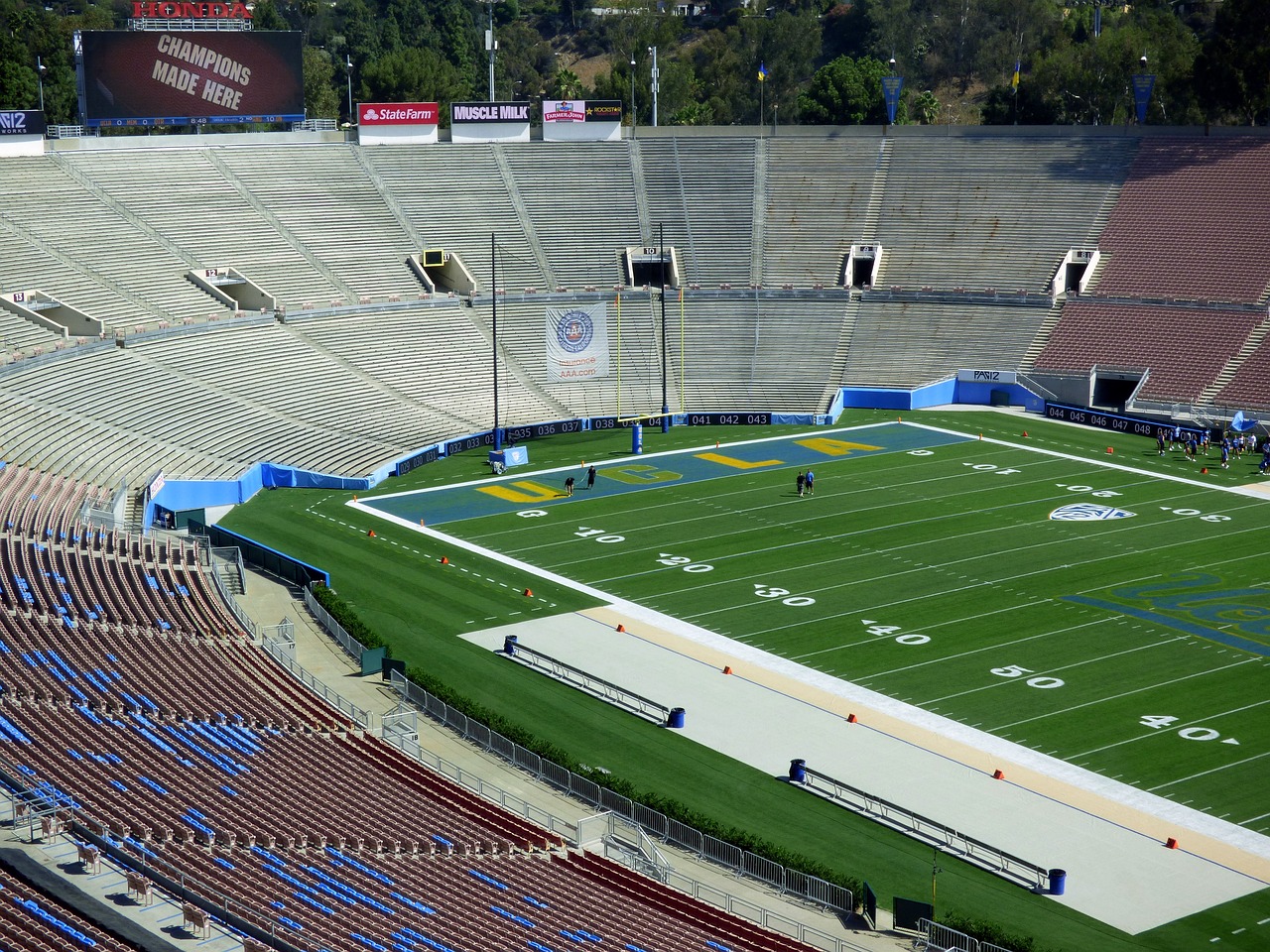
- A college football field is 120 yards long.
- This includes the 10-yard end zones at each end of the field.
- The actual playing field between the goal lines is 100 yards.
The Kickoff
- The initial play in a college football game typically starts with a kickoff.
- Kickoff: The ball is placed on a tee at the defending team’s 35-yard line.
- A player from the kicking team (determined by a coin toss by the referee) kicks the ball down the field towards the opposing team’s end zone.
- The goal is to kick the ball as far down the field as possible, forcing the receiving team to start their drive from a less advantageous position.

The Receiving Team:
- The receiving team attempts to catch the ball and advance it as far as possible.
- Their Goal: To score a touchdown by carrying or throwing the ball across the opposing team’s goal line.
- Key Objective: To gain as much yardage as possible on each play to move closer to the opposing team’s end zone.
The defending team :
In college football aims to prevent the offense from advancing the ball towards their own end zone.
- Their Goal: To stop the opposing team from scoring a touchdown.
- Methods: They use various defensive strategies, such as tackling, pressuring the quarterback, and intercepting passes, to try and stop the offensive team’s progress.
- Essentially, both teams are trying to keep the ball out of their own end zone and force the offense to make mistakes.
Why Is College Football So Popular?
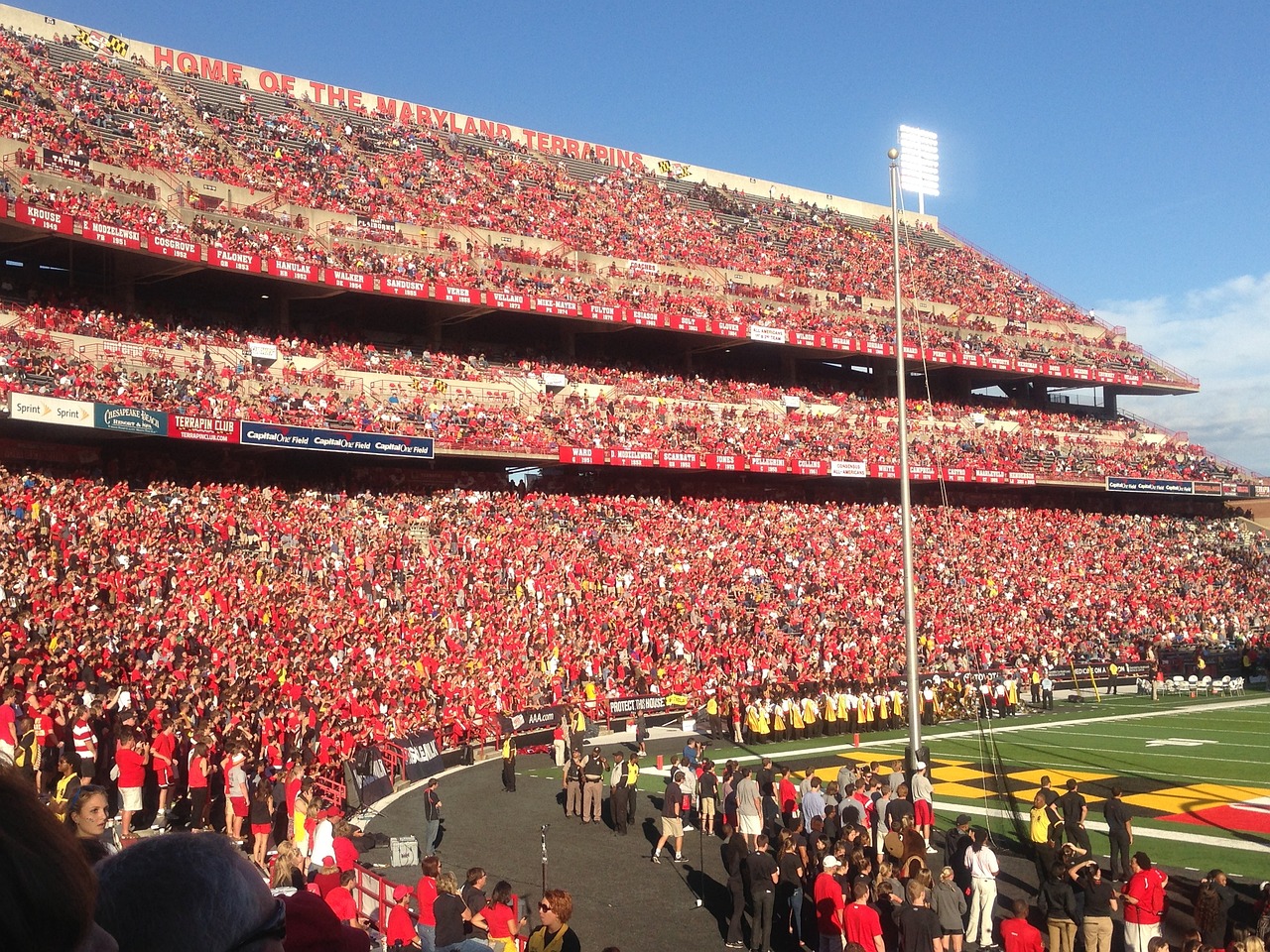
The popularity of college football stems from several key factors:
- Tradition and History: Many college programs have storied histories dating back over a century. Schools like Notre Dame, Alabama, and Michigan boast legacies filled with iconic players, coaches, and championship wins.
- Regional Pride: College football is deeply rooted in local culture. In many regions, especially in the South and Midwest, college football is more than a sport — it’s a way of life. Fans rally around their team as representatives of their community, state, or region.
- Rivalries: Intense rivalries like Ohio State vs. Michigan, Alabama vs. Auburn, or Texas vs. Oklahoma amplify the passion of the game. These matchups often divide households and spark debates that last for generations.
- Game Day Experience: The pageantry of college football is unmatched. From marching bands and cheerleaders to tailgating and fight songs, game days are immersive events that unite fans of all ages.
- Unpredictability: Unlike professional football, where talent is often evenly distributed, college football games can be wildly unpredictable, with underdogs occasionally toppling powerhouse programs.
The NCAA Division I Football Bowl Subdivision (FBS)
The NCAA Division I Football Bowl Subdivision (FBS) is the highest level of college football competition in the United States.
Key Characteristics:
• Large Schools: Primarily consist of larger universities with significant athletic resources.
• High-Level Competition: Features the most talented players and competitive games in college football.
• Bowl Games: Many FBS teams participate in bowl games at the end of the season.
• Scholarships: FBS schools can offer up to 85 full athletic scholarships to football players.
• Prominence: FBS football is a major source of revenue and generates significant media attention.
The FBS is responsible for the most prestigious and competitive games in college football, including the College Football Playoff.
Key Conferences in College Football
The main college football conferences, in the NCAA Division I Football Bowl Subdivision (FBS), are divided into the “Power Five” and “Group of Five” categories based on their prominence and resources: Some teams operate independently and are not affiliated with any conference. They typically schedule their games and still compete for bowl eligibility. Notable Independent Teams: University of Notre Dame (Fighting Irish), Army West Point/USMA (Black Knights), University of Connecticut (UConn Huskies).
I. Power Five Conferences
The Power Five conferences are the most prestigious in college football, with the largest fan bases, highest budgets, and top-level talent. These are:
1. Atlantic Coast Conference (ACC)
Geographic Focus: South (South Atlantic, East South Central, West South Central) Northeast (Mid Atlantic, New England), Midwest (East North Central), West (Pacific). It was Established in 1953. Headquartered in Charlotte, North Carolina.
Teams:
- Southern Methodist University (SMU Mustangs)
- Clemson University (Clemson Tigers)
- University of Miami (Miami Hurricanes)
- Syracuse University (Syracuse Orange)
- University of Louisville (Louisville Cardinals)
- Georgia Institute of Technology (Georgia Tech Yellow Jackets)
- Duke University (Duke Blue Devils)
- Virginia Polytechnic Institute and State University (Virginia Tech Hokies)
- Boston College (Boston College Eagles)\
- University of Pittsburgh (Pittsburgh Panthers)\
- North Carolina State University (NC State Wolfpack)
- University of North Carolina at Chapel Hill (North Carolina Tar Hill)
- University of California, Berkley (California Golden Bears)
- University of Virginia (Virginia Cavaliers).
- Wake Forest University (Wake Forest Demon Deacons)
- Stanford University (Stanford Cardinal)
- Florida State University (Florida State Seminoles).
2. Big Ten Conference:
The Big Ten Conference, founded in 1896 and headquartered in Chicago, Illinois, is one of the oldest and most prestigious athletic conferences in college sports. Despite its name, the Big Ten has grown and will expand to 18 teams in 2024. It primarily includes schools in the Midwest (East North Central, West North Central), Northeast (Mid-Atlantic), and West (Pacific).
Teams:
- University of California (UCLA Bruins)
- University of Illinois Urbana-Champaign (Illinois Fighting Illini)
- Indiana University Bloomington (Indiana Hoosiers)
- University of Iowa (Iowa Hawkeyes)
- University of Maryland, College Park (Maryland Terrapins)
- University of Michigan (Michigan Wolverines)
- Michigan State University (Michigan State Spartans)
- University of Minnesota Twin Cities (Minnesota Golden Gophers)
- University of Nebraska-Lincoln (Nebraska Cornhuskers)
- Northwestern University (Northwestern Wildcats)
- The Ohio State University (Ohio State Buckeyes)
- University of Oregon (Oregon Ducks)
- Pennsylvania State University (Penn State Nittany Lions)
- West Lafayette Indiana (Purdue Boilermakers)
- New Brunswick-Piscataway, New Jersey (Rutgers Scarlet Knights)
- University of Southern California (USC Trojans)
- University of Washington (Washington Huskies)
- University of Wisconsin-Madison (Wisconsin Badgers)
Big Ten Characteristics:
- Academics and Athletics: The Big Ten prides itself on combining athletic excellence with strong academics, as many of its member schools are also highly respected research institutions.
- Traditions: Features iconic rivalries like Michigan vs. Ohio State, one of the most-watched games in college football.
- 2024 Expansion: The Big Ten has welcomed teams like USC, UCLA, Oregon, and Washington, which brought a new West Coast dynamic to the conference.
- Michigan, Ohio State, and Penn State also joined in 2024.
3. Big 12 Conference
The Big 12 Conference is a major collegiate athletic organization that competes in the NCAA Division I Football Bowl Subdivision (FBS), the highest level of college football in the United States. Established in 1994 and headquartered in Irving, Texas, the conference originally brought together teams primarily from the South and Midwest regions. Over the years, it has undergone significant changes due to expansion and realignment, solidifying its place as one of the “Power Five” conferences. Current geographic focus: South (South Atlantic, West South Central) Midwest (East North Central, West North Central) West (Mountain, Southwest).
Note:
- Texas and Oklahoma left for the SEC in 2024.
- BYU joined the Big 12 in 2024
Teams:
- Arizona State University (Arizona Sun Devils)
- University of Arizona (Arizona Wildcats)
- Baylor University (Baylor Bayers)
- University of Kansas (Kansas Jayhawks)
- Texas Tech University (Texas Tech Red Raiders)
- Iowa State (Iowa State Cyclones)
- Kansas State University (Kansas State Wildcats)
- Oklahoma State (Oklahoma State Cowboys)
- Texas Christian University (TCU Horned Frogs)
- University of Utah (Utah Utes)
- West Virginia University (West Virginia Mountaineers)
- University of Colorado Boulder (Colorado Buffaloes)
- University of Houston (Houston Cougars)
- University of Central Florida (UCF Knights)
- University of Cincinnati (Cincinnati Bearcats)
- Brigham Young University (BYU Cougars)
Characteristics of the Big 12 Conference
- Competitive Parity: The Big 12 is known for its balanced competition, where multiple teams consistently vie for the conference championship, creating an unpredictable and exciting season.
- Offensive Firepower: The conference has a reputation for high-scoring games, often showcasing innovative and fast-paced offensive schemes. Teams like Oklahoma State, Texas Tech, and TCU have contributed to this offensive legacy.
- Geographic Diversity: With members spanning from Texas to Utah and as far as West Virginia, the Big 12 features diverse fan bases and regional traditions.
- New Additions: Recent expansion brought in schools like BYU, Houston, UCF, and Cincinnati, further diversifying the conference’s talent and market reach.
- NFL Pipeline: The Big 12 has produced numerous NFL stars, particularly quarterbacks, with alumni like Patrick Mahomes and Jalen Hurts making their mark in professional football.
- Rivalries: The conference hosts historic rivalries, such as the “Bedlam Series” between Oklahoma State and Oklahoma (before Oklahoma’s SEC move).
4. Southeastern Conference (SEC)
The Southeastern Conference (SEC) is widely considered the most competitive and successful conference in college football, especially in recent decades. Founded in 1932 and headquartered in Birmingham, Alabama, the SEC is synonymous with Southern culture and football dominance. It primarily includes schools in the South (South Atlantic, East South Central, West Central,) and Midwest (West North Central).
Teams:
- University of Alabama (Alabama Crimson Tide)
- University of Arkansas (Arkansas Razorbacks)
- Auburn University (Auburn Tigers)
- University of Florida (Florida Gators)
- University of Georgia (Georgia Bulldogs)
- University of Kentucky (Kentucky Wildcats)
- University of Louisiana (LSU Tigers)
- Mississippi State University (Mississippi State Bulldogs)
- University of Missouri (Missouri Tigers)
- University of Mississippi (Ole Miss Rebels)
- University of Volunteers (Tennessee Volunteers)
- University of South Carolina (South Carolina Gamecocks)
- Texas A&M University (Texas A&M Aggies)
- Vanderbilt University (Vanderbilt Commodores)
- University of Texas (Texas Longhorns)
- University of Oklahoma (Oklahoma Sooners).
Southeastern Conference (SEC) Characteristics:
- Dominance in Championships: The SEC consistently produces national champions, with teams like Alabama and Georgia leading the way in recent years. Over the past decade, the SEC has solidified its reputation as the premier conference in college football.
- Passionate Fan Base: SEC fans are renowned for their enthusiasm and loyalty. Massive stadiums, such as Alabama’s Bryant-Denny Stadium and LSU’s Tiger Stadium (often called “Death Valley”), are regularly packed with fans creating an electric game-day atmosphere.
- Recruiting Powerhouse: The SEC attracts top high school talent nationwide, resulting in highly competitive teams filled with elite athletes.
- Cultural Significance: In the southern U.S., college football is a way of life, and the SEC represents the heart of this culture. Tailgating, marching bands, and school traditions make every game an event.
- 2024 Expansion: With the addition of Texas and Oklahoma, the SEC is set to become even more competitive and diverse, introducing new rivalries and expanding its footprint.
5. Pacific 12 (Pac-12) Conference
The Pac-12 Conference, often called the “Conference of Champions,” has long been a cornerstone of collegiate athletics, particularly on the West Coast of the United States. Founded in 1915 and headquartered in San Ramon, California, the Pac-12 is renowned for its rich history, athletic excellence, and strong commitment to academics.
The conference has been a pioneer in collegiate sports, fostering legendary rivalries and producing some of the most iconic moments in college football history. Teams like USC, Oregon, and Washington have consistently been national contenders, showcasing the Pac-12’s competitive spirit on the national stage.
The Pac-12 Conference in 2024 marks a pivotal moment in its storied history. “The Pac-12 Conference in 2024 stands at a critical juncture in its history. In the 2022 season, the conference boasted a membership of 12 prominent universities:
- University of Arizona (Arizona Wildcats)
- Arizona State University (Arizona State Sun Devils)
- University of California, Berkeley (California Golden Bears)
- University of Colorado (Colorado Buffaloes)
- University of Oregon (Oregon Ducks)
- Oregon State University (Oregon State Beavers)
- Stanford University (Stanford Cardinals)
- University of California, Los Angeles (UCLA Bruins)
- University of Southern California (USC Trojans)
- University of Utah (Utah Utes)
- University of Washington (Washington Huskies)
- Washington State University (Washington State Cougars)
From the Pac-12 to the “Pac-2” to a questionable future.
However, 2024 brought a period of transition and challenges due to significant realignments. The Pac-12 Conference has undergone a dramatic transformation. Following the departures of USC, UCLA, Oregon, and Washington University to the Big Ten, University of Arizona, Arizona State, Colorado, and Utah to the Big 12, and Stanford and University of California, Berkley to the ACC, the conference was left with only two members:
- Oregon State (Oregon State Beavers)
- Washington State ((Washington State Cougars)
To ensure its survival, the Pac-12 is expanding by adding several schools from the Mountain West Conference, including Boise State University (Broncos) and San Diego State University (Aztecs), as well as Gonzaga University (Bulldogs) from the West Coast Conference. While these additions aim to stabilize the conference, the Pac-12 faces significant challenges in regaining its former competitive strength and national prominence.
II. Group Five Conferences
The term “Group of Five” in college football refers to five athletic conferences that are part of the NCAA Division I Football Bowl Subdivision (FBS) but are not included in the “Power Five” conferences. These conferences are generally considered to have fewer resources, smaller budgets, and less national recognition compared to the Power Five. However, they are still home to competitive teams and passionate fanbases. The Group of Five conferences include:
1. American Athletic Conference (AAC)
In 2024, the American Athletic Conference (AAC) underwent significant changes due to conference realignment. SMU departed to join the Atlantic Coast Conference (ACC), while Army joined the AAC as a football-only member. As a result, the AAC maintained 14 football members for the 2024 season. The teams competing in the AAC for the 2024 season are:
- Westpoint (Army Black Knights)
- East Carolina University (East Carolina Pirates)
- Florida Atlantic University (Florida Atlantic Owls)
- University of Memphis (Memphis Tigers)
- United States Naval Academy (Navy Midshipmen)
- The University of North Texas (North Texas Mean Green)
- Rice University (Rice Owls)
- University of South Florida (South Florida Bulls)
- Temple University (Temple Owl)
- Tulane University (Tulane Green Wave)
- University of Tulsa (Tulsa Golden Hurricane)
- University of Alabama at Birmingham (UAB Blazers)
- University of Texas at San Antonio (UTSA Roadrunners)
- University of North Carolina at Charlotte (Charlotte 49ers)
These teams represent a diverse geographic footprint, spanning from the Northeast to the South-Central United States, contributing to the AAC’s competitive and dynamic landscape in college football.
2. Conference USA (C-USA)
In 2024, Conference USA (C-USA) continues to adapt and thrive in the evolving landscape of college athletics. With recent realignments reshaping its membership, C-USA remains committed to fostering competitive sports programs while delivering exciting matchups for fans. As a part of the Group of Five conferences, C-USA consistently produces strong football teams vying for bowl games and national recognition. In 2024, the Conference USA (C-USA) includes the following teams:
- Florida International University (FIU Panthers)
- Jacksonville State University (Jacksonville State Gamecocks)
- Liberty University (Liberty Flames)
- Louisiana Tech University (Louisiana Tech Bulldogs)
- Middle Tennessee State University (Middle Tennessee Blue Raiders)
- New Mexico State University (New Mexico State Aggies)
- Sam Houston State University (Sam Houston Bearkats)
- University of Texas at El Paso (UTEP Miners)
- Western Kentucky University (Western Kentucky Hilltoppers)
These programs represent a mix of longstanding C-USA members and recent additions, showcasing the conference’s dynamic evolution and commitment to competitive collegiate athletic.
3. Mid-American Conference (MAC)
The Mid-American Conference (MAC) in 2024 continues to uphold its legacy as one of college football’s most competitive and entertaining Group of Five conferences. Known for producing thrilling games and showcasing underdog stories, the MAC offers a unique charm with its midweek “MACtion,” a tradition of weekday games that bring excitement to fans across the country.
Teams in the 2024 MAC
The 12 teams competing in the MAC in 2024 are:
East Division:
- Akron University (Akron Zips)
- Bowling Green University (Bowling Green Falcons)
- Buffalo University (Buffalo Bulls)
- Kent State University (Kent State Golden Flashes)
- Miami University in Ohio (Miami RedHawks)
- Ohio University (Ohio Bobcats)
West Division:
- Ball State (Ball State Cardinals)
- Central Michigan (Central Michigan Chippewas)
- Eastern Michigan (Eastern Michigan Eagles)
- Northern Illinois (Northern Illinois Huskies)
- Toledo (Toledo Rockets)
- Western Michigan (Western Michigan Broncos)
With its tradition of exciting games, passionate fanbases, and a knack for surprising upsets, the MAC is set to deliver another memorable season in 2024.
4. Mountain West Conference (MWC)
In the 2024 season, the Mountain West Conference (MWC) comprises the following 12 football teams:
- United States Air Force Academy (Airforce Falcons)
- Boise State University (Boise State Broncos)
- Colorado State University (Colorado State Rams)
- California State University, Fresno (Fresno State Bulldogs)
- University of Hawai‘i (Hawai‘i Rainbow Warriors)
- University of Nevada, Reno (Nevada Wolf Pack)
- University of New Mexico (New Mexico Lobos)
- San Diego State University (San Diego Aztecs)
- San José State University (San José Spartans)
- University of Nevada, Las Vegas Rebels (UNLV Rebels)
- Utah State University (Utah State Aggies)
- University of Wyoming (Wyoming Cowboys)
These teams compete annually for the Mountain West Championship, contributing to a dynamic and competitive conference landscape.
5. Sun Belt Conference
In the 2024 season, the Sun Belt Conference features the following 14 football teams, divided into two divisions:
East Division:
- Appalachian State University (Appalachian State Mountaineers)
- Coastal Carolina University (Coastal Carolina Chanticleers)
- Georgia Southern University (Georgia Southern Eagles)
- Georgia State University (Georgia State Panthers)
- James Madison University (James Madison Dukes)
- Marshall University (Marshall Thundering Herd)
- Old Dominion University (Old Dominion Monarchs)
West Division:
- Arkansas State University (Arkansas State Red Wolves)
- University of Louisiana (Louisiana Ragin’ Cajuns)
- University of Louisiana at Monroe (ULM Warhawks)
- University of South Alabama (South Alabama Jaguars)
- University of Southern Mississippi (Southern Miss Golden Eagles)
- Texas State University (Texas State Bobcats)
- Troy University (Troy Trojans)
These conferences play a key role in the landscape of college football. Teams from the Group of Five have the opportunity to compete in major bowl games through the College Football Playoff system and often produce thrilling upsets and standout performances. Some teams from these conferences have gained national prominence, proving that talent and success are not limited to the Power Five.
The Role of Fans and Fantasy Drafts
College football fans are some of the most passionate in all of sports. They don’t just watch games; they analyze stats, follow recruiting classes, and even create mock drafts. While fantasy football is more common in the NFL, dedicated college football enthusiasts often construct their own player draft pools, predicting which college athletes will shine or transition to the NFL.
This fan-driven engagement fosters a deeper connection to the sport. Mock drafts are especially popular during the off-season, as fans speculate which players will dominate the next season or become top picks in the NFL Draft. Social media platforms and forums are filled with debates about rankings, team prospects, and future NFL stars.
Spotlight on the 2024 College Football Season
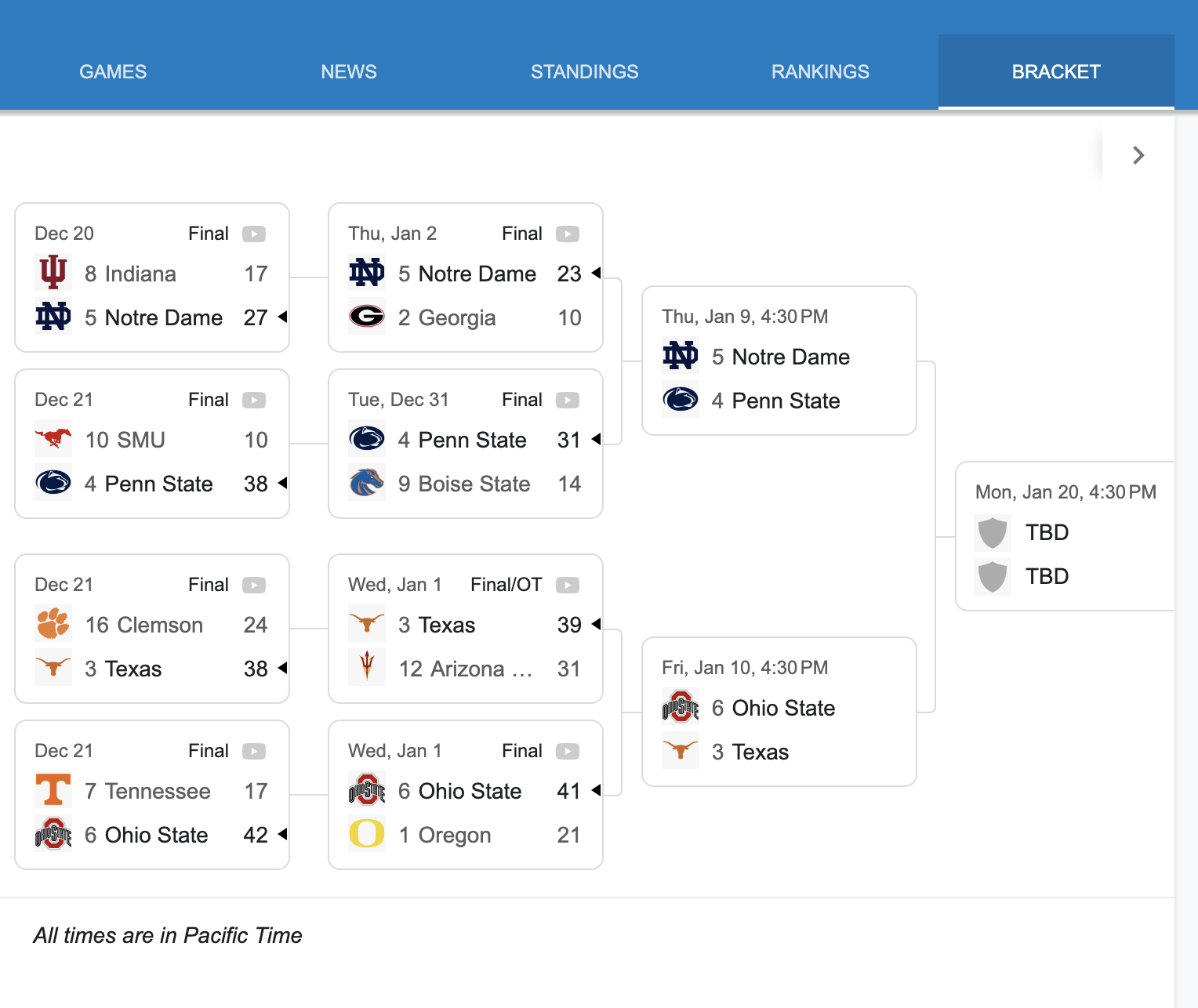
The 2024 college football season is shaping up to be one for the books. Key storylines include:
- Expanded College Football Playoff: For the first time, the College Football Playoff (CFP) expands to 12 teams, allowing more programs a shot at the national title. This change brings heightened excitement and stakes to the season.
- Dominant Programs in Focus: Perennial powerhouses like Georgia, Alabama, and Michigan are expected to contend for the title, but emerging teams like Florida State and Washington could shake up the traditional hierarchy.
- Heisman Trophy Race: Top players to watch include Caleb Williams (QB, USC) and Marvin Harrison Jr. (WR, Ohio State). The competition for college football’s most prestigious individual award will be fierce.
- Conference Realignment: With the Big Ten and SEC adding new members, the season will feature fresh matchups and altered dynamics in traditional power conferences.
- Rivalry Week Thrills: As always, the late-season rivalry games will provide drama and determine conference champions, playoff contenders, and bragging rights.
Big Ten vs. SEC: The Rivalry
The Big Ten and SEC are often seen as competitors in the college football world:
- Style of Play: The SEC is known for speed and athleticism, while the Big Ten has a reputation for physical, grind-it-out football (though both styles have evolved over time).
- Recruiting Battles: These conferences frequently compete for the nation’s top high school talent.
- Championship Contenders: Both conferences regularly produce teams that compete for the national title, making them key players in the College Football Playoff.
- In 2024, with conference expansions and the new 12-team playoff, the Big Ten and SEC will play an even bigger role in shaping the college football landscape. Fans can look forward to thrilling matchups and continued debate about which conference reigns supreme!
The most prestigious championships in college football Division
These are:
1. College Football Playoff National Championship:
- It’s a four-team playoff system that determines the national champion through a series of elimination games.
- The playoff format was introduced in 2014, replacing the Bowl Championship Series (BCS) system.
- The College Football Playoff is considered by many to be the most exciting and competitive way to determine a national champion.
2. AP National Championship:
- A long-standing tradition in college football, dating back to 1936.
- Based on a weekly poll of sportswriters and broadcasters, the AP poll ranks teams throughout the season.
- The team ranked #1 in the final AP poll is considered the AP National Champion.
- The AP poll holds significant historical weight and is highly regarded in the college football world.
3. Coaches’ Poll National Championship:
- Similar to the AP poll, this championship is determined by a weekly poll of college football coaches.
- The coaches’ poll provides valuable insight into the opinions of those who directly influence the game.
- The team ranked #1 in the final Coaches’ Poll is considered the Coaches’ Poll National Champion.
Key Differences and Considerations:
- Playoff vs. Polls: The College Football Playoff provides a definitive on-field determination of the champion, while the AP and Coaches’ Polls are based on subjective rankings.
- Historical Significance: The AP and Coaches’ Polls have a longer history and are deeply ingrained in college football tradition.
- Public Perception: The College Football Playoff has gained significant popularity and is often seen as the most definitive championship in the eyes of many fans.
- Ultimately, all three championships hold significant weight in college football. While the College Football Playoff has become the most prominent in recent years, the AP and Coaches’ Polls continue to be highly respected and influential.

Bowl Games
Many FBS teams participate in bowl games at the end of the season. Here are some of the most well-known:
I. New Year’s Six Bowls:
These are considered the most prestigious bowl games:
1. Fiesta Bowl:
One of the 6 New Year Bowls, the Fiesta Bowl is an annual American college football bowl game played in the Phoenix metropolitan area. The Fiesta Bowl played in Glendale, Arizona on December 31, 2024, at State Farm Stadium. At the playoff Quarterfinal Game, the stage was set for a clash of titans: the Penn State Nittany Lions versus the Boise State Broncos. In a hard-fought battle, the Nittany Lions emerged victorious, defeating the Broncos 31-14.
2. Rose Bowl:
The Rose Bowl is an iconic American college football bowl game played annually on New Year’s Day (or January 2nd if New Year’s Day falls on a Sunday) at the Rose Bowl Stadium in Pasadena, California. On Wednesday, January 1st, 2025, the Bowl featured a highly anticipated rematch between the University of Oregon Ducks and the Ohio State Buckeyes. This matchup held significant intrigue as these two teams already faced off during the regular season, with Oregon emerging victorious in a thrilling 32-31 upset. Ohio State was undoubtedly motivated to avenge that loss on the grand stage of the Rose Bowl, the went on to beat Oregon 41-21. This game serves as one of the College Football Playoff Semifinals, adding even more weight to the already intense rivalry. With this win, Ohio State Buckeyes have advanced to the College Football Semifinals where it will face Peach Bowl’s winner Texas Longhorns.
3. Peach Bowl:
The 2025 Peach Bowl, a thrilling College Football Playoff Quarterfinal and one of the prestigious New Year’s Six bowls, unfolded on Wednesday, January 1, 2025, at the electrifying Mercedes-Benz Stadium in Atlanta, Georgia. This high-stakes clash pitted the No. 4 seed Arizona State Sun Devils against the No. 5 seed University of Texas Longhorns. In a hard-fought battle, the Texas Longhorns emerged victorious, solidifying their place in the College Football Playoff Semifinals, where they will face Ohio State Buckeyes, the winner of the Rose Bowl. The Peach Bowl, a showcase of elite college football, once again proved its significance as a pivotal stage in the quest for the national championship
4. Sugar Bowl:
The 2025 Sugar Bowl is a highly anticipated College Football Playoff Quarterfinal matchup between the University of Georgia Bulldogs and the University of Notre Dame Fighting Irish. The Game was originally scheduled for Wednesday, January 1st, 2025, but had to be postponed to Thursday, January 2nd, 2025, at Caesars Superdome in New Orleans due to a New Year Day terrorist attack. This game will feature a clash of titans, pitting a recent national champion (Georgia) against a storied program with a rich history (Notre Dame). The winner of this game will advance to the College Football Playoff Semifinal to battle Ohio State Buckeyes, keeping their national championship dreams alive.
5. Orange Bowl:
The 2025 Orange Bowl will be a College Football Playoff Semifinal game. It will take place at Hard Rock Stadium in Miami Gardens, Florida, on Thursday, January 9, 2025. The winner of the Fiesta Bowl (Penn State Nittany Lions) will face the winner of the Sugar Bowl in this game.
6. Cotton Bowl:
The 2025 Cotton Bowl Classic will be a College Football Playoff Semifinal game. It will take place at AT&T Stadium in Arlington, Texas on Friday, January 10, 2025. The winner of the Rose Bowl (Ohio State Buckeyes) will face the winner of the Peach Bowl (Texas Longhorns) in this game. The Cotton Bowl is known for its exciting matchups and festive atmosphere. Note: The specific teams playing in the 2025 Cotton Bowl are determined until after the Rose Bowl and Peach Bowl games are played.
Note:
- These bowls rotate as College Football Playoff Semifinals.
- This is not an exhaustive list. In addition to the 6 prestigious New Year Bowls, many other bowl games are played throughout the season.
- The specific bowl matchups are determined by a complex system that considers factors like team rankings, conference affiliations, and fan interest.
The Road to the Six Bowls
The selection process for the New Year’s Six bowl games is a complex interplay of factors:
- College Football Playoff (CFP) Rankings: The CFP Selection Committee evaluates and ranks teams throughout the season. The top four ranked teams earn spots in the CFP Semifinals, which rotate annually among the New Year’s Six bowls. For the 2024-2025 season, the semifinals will take place at [specific bowl games, e.g., the Sugar Bowl and Rose Bowl].
- Conference Tie-Ins: Traditional conference affiliations still play a role in bowl selections. For instance, the Rose Bowl maintains its long-standing tie-in with the Big Ten and Pac-12 (or their successor structures, given ongoing conference realignments), provided neither team is involved in the CFP.
- Bowl Selection Committees: Each bowl game has its own selection committee responsible for finalizing matchups. These committees factor in CFP rankings, team performance, fan interest, and other considerations such as geographical balance and historical relevance when determining participants.
- The selection process for the New Year’s Six bowl games during the 2024-2025 season remains a dynamic combination of several factors. With continued conference realignment and expanded playoff discussions, the 2024-2025 season highlights the evolving nature of college football’s postseason landscape.
II. Other Notable Bowls:
Sun Bowl, Gator Bowl, Citrus Bowl, Liberty Bowl, Independence Bowl, Holiday Bowl, ReliaQuest Bowl, Las Vegas Bowl, Alamo Bowl,
Music City Bowl, Duke’s Mayo Bowl, Armed Forces Bowl, Texas Bowl, Birmingham Bowl, New Mexico Bowl, Military Bowl, Gasparilla Bowl,
Pinstripe Bowl, First Responder Bowl, Bahamas Bowl, Boca Raton Bowl, Salute to Veterans Bowl, Quick Lane Bowl, Cure Bowl, Arizona Bowl, Frisco Bowl, Myrtle Beach Bowl, Fenway Bowl, LA Bowl. This is not an exhaustive list, as there are many other bowl games played throughout the season. The specific bowl matchups are determined by a complex system that considers factors like team rankings, conference affiliations, and fan interest.
The Winners
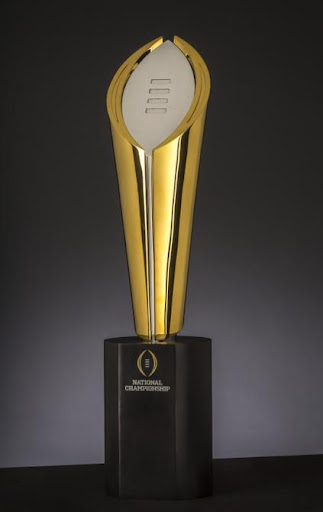
Here are the College Football National Champions for the past 10 years:
- 2024-2025:
- 2023-2024: University of Michigan Wolverines
- 2022-2023: University of Georgia Bulldogs
- 2021-2022: University of Georgia Bulldogs
- 2020-2021: University of Alabama Crimson Tide
- 2019-2020: Louisiana State University Tigers
- 2018-2019: Clemson University Tigers
- 2017-2018: University of Alabama Crimson Tide
- 2016-2017: Clemson University Tigers
- 2015-2016: University of Alabama Crimson Tide
- 2014-2015: Ohio State University Buckeyes
In conclusion, American college football is more than a sport; it’s a cultural phenomenon that unites millions of fans. Its unique blend of tradition, passion, and unpredictability keeps people coming back season after season. Whether you’re a die-hard fan or new to the game, the 2024 college football season promises excitement, drama, and unforgettable moments that showcase why this sport holds such a special place in American hearts.

